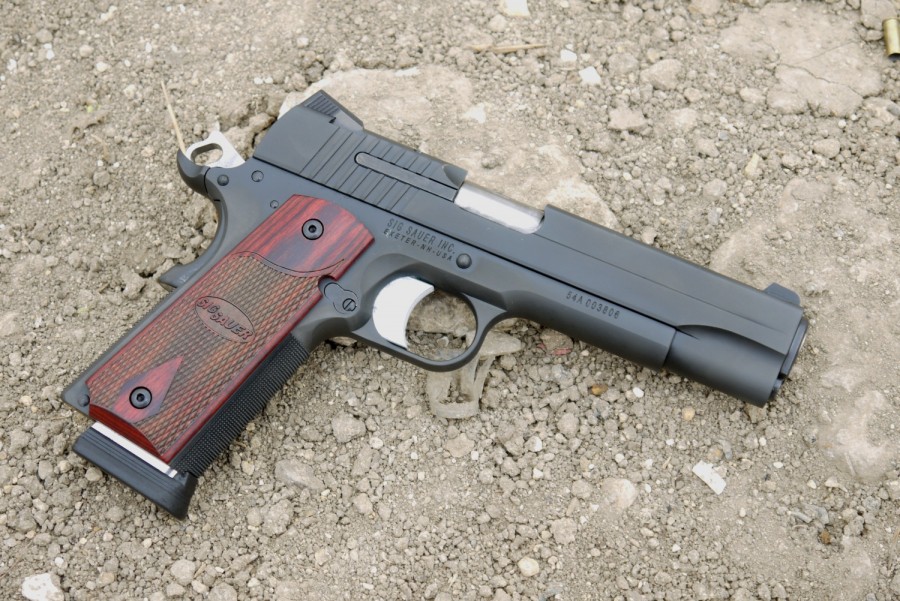
Sig Sauer is a company known for its high-quality double-action semiautomatic pistols. But in 2004, the company made a bold move and entered the single-action M1911 marketplace. More than a decade later, the company continues to improve its 1911 offerings and is becoming a force to be reckoned with on the 1911 front.
Their first effort was the GSR, an abbreviation for Granite Series Rail, tipping the hat to the state of New Hampshire where their US headquarters and production facilities are based. The pistols are constructed of stainless steel frame and use a slide more reminiscent in profile to traditional, double-action Sig Sauer pistols. The rail is a Picatinny type, which allows the mounting of flashlights, lasers and other accessories.
Sig offers a version without the rail called the Match Elite. This version is marketed toward competitive shooters, and the pistol features a match grade trigger and barrel as well as a magazine funnel.
Some of the company’s offerings in the 1911 arena include the TACOPS and Scorpion models. These versions are coated in black Nitrolon for the TACOPS and a desert tan for the Scorpion. Most models are available with threaded barrels for use with a sound suppressor. The TACOPS makes use of gritty slim line grips, whereas the Scorpion utilizes G10 fiberglass grip panels.
Be Prepared. Learn The Best Ways To Hide Your Guns.
Accuracy of these pistols is superb, and both models feature Novak-type sights, some with tritium inserts. The standard barrel length is 5 inches and a carry version is available with a 4.25-inch barrel.
Sig’s 1911s ship in durable foam-padded, hard-sided cases and come standard with two high quality magazines holding 8 rounds each. Other packages can be ordered, with as many as six spare magazines coming from the factory.
There seem to be three complaints about the Sig 1911 series.
The first is that the pistol makes use of an external extractor. Personally, I prefer this feature, as it seems to be more robust and more reliable than the version normally encountered on this over-a-century-old design.
Second is the use of some MIM (metal injection molding) parts in its construction. MIM is controversial, as some companies produce parts that can break easily and this taints the reputation of those companies who get it right. From an aesthetic perspective, most MIM parts give a mismatched look to any handgun due to the differences in metallurgy with slide and frame construction.
Third, there is the issue with the slide dimensions being thicker than most 1911 pistols. This can make finding a holster problematic or expensive if you go the custom route.
I can live with those three issues, as I have found my Sig 1911 pistols to be very reliable and surprisingly accurate for an out-of-the-box 1911. It routinely outshot some of my higher-end custom 1911 pistols to the point where I traded one in so I could buy two more Sig pistols.
In 2015 Sig announced a 1911 chambered in its popular 357 Sig cartridge. It is safe to say that this is a variant with which I want to try next.
Have you tried Sig’s 1911s? What was your reaction, and which one did you use? Share your advice below:
Pump Shotguns Have One BIG Advantage Over Other Shotguns. Read More Here.










